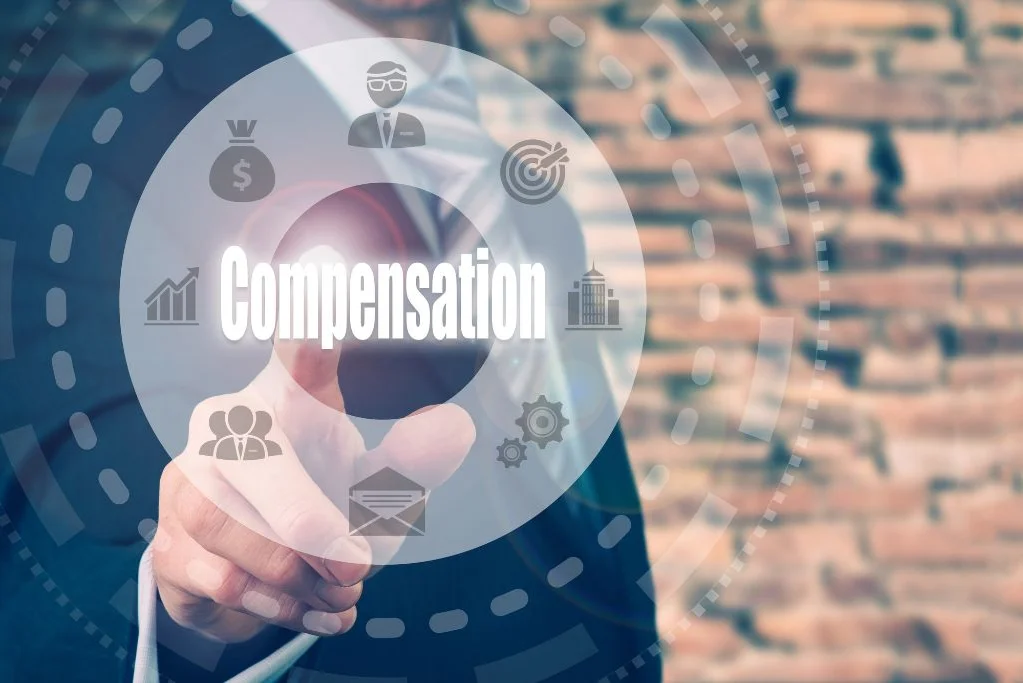Decoding Compensation: A Holistic Perspective for Employees and Leaders
Imagine a workplace where employees believe their compensation not only reflects their skills but also actively contributes to their sense of...
 Do you ever find yourself in situations where providing feedback becomes unexpectedly challenging? Perhaps it's during an annual performance review or when you offer feedback to an employee who seems to agree, but nothing changes. If this sounds familiar, you're not alone.
Do you ever find yourself in situations where providing feedback becomes unexpectedly challenging? Perhaps it's during an annual performance review or when you offer feedback to an employee who seems to agree, but nothing changes. If this sounds familiar, you're not alone.
In the world of professional growth, one skill stands out as both an art and a science—the ability to give feedback. Whether you're a leader guiding a team or a colleague collaborating on a project, mastering the art of providing feedback is critical to your success. It's not just about what you say but also how and when you say it. In this Insights, we'll dive into the layers of constructive feedback and uncover strategies to turn it into a powerful tool for growth and development.
The Dynamics of Improvement
Effective feedback is the driving force that propels individuals toward improvement. It goes beyond mere critique; it acts as a catalyst for growth and refinement. Recognizing that feedback is an ongoing dialogue for enhancement is fundamental to its success. So, how does feedback foster individual improvement?
Key Points to Consider
Skill Enhancement - Feedback provides precise guidance on how individuals can enhance their skills. It acts as a compass, pinpointing specific areas for improvement and suggesting alternative approaches for mastery. Remember, when individuals know what needs improvement, they can expect a different outcome. Consider this approach: Instead of vague feedback like "You need to improve your communication skills," provide specific guidance, such as, "Consider incorporating storytelling techniques to make your presentations more engaging."
Alignment with Organizational Goals - Feedback ensures that individual efforts align with organizational goals. Offering clarity on expectations and performance benchmarks facilitates a cohesive approach to achieving overarching objectives. Connecting individual contributions to broader organizational goals is essential to help employees see their impact. Try this: "Your attention to detail in the project directly contributed to our overall goals of delivering high-quality products to our customers."
Cultivation of a Growth Mindset and Continuous Improvement - How often do employees react negatively to a meeting invite from their manager? Regular feedback cultivates a growth mindset within individuals and teams. It fosters a culture where challenges are viewed as opportunities for learning and growth while setting the stage for conversations that do not always equate to negative. Constructive feedback also serves as a motivational force for continuous improvement. Encourage this mindset: Acknowledge effort, not just opportunities. Instead of solely focusing on outcomes, appreciate the process. For example, "Your persistence in tackling challenges head-on shows commendable commitment to continuous improvement." Acknowledge achievements: "Your recent project completion showcases your capabilities. Let's explore how you can take on additional responsibilities to contribute further to our team's success."
Enhanced Self-Awareness - Feedback acts as a reflective mirror, enhancing self-awareness. It provides insights into strengths and weaknesses, allowing for a more accurate understanding of one's professional identity and potential areas for development. Balance feedback: Provide feedback that highlights both strengths and areas for improvement. For instance, "Your ability to collaborate with diverse teams is a strength; consider further honing your project management skills to enhance overall effectiveness."
Building a Culture of Open Communication - Establishing a feedback-rich environment contributes to a culture of open communication. When individuals feel encouraged to share their perspectives and insights, it creates a collaborative atmosphere where everyone plays a role in shaping the professional landscape.
Promote two-way communication - Actively seek input and respond positively, even when feedback is challenging or not immediately actionable. Being dismissive or unresponsive can hinder future communications.
Reduction of Performance Gaps - No one likes to hear about multiple areas needing improvement during an annual review when they believe they are excelling. By addressing performance gaps in real-time, feedback bridges the divide between current performance and desired outcomes, allowing employees to redirect and pivot when necessary. Timely feedback: Provide prompt feedback to address performance gaps, avoiding the waiting game until annual reviews. For example, "Let's discuss ways to enhance your efficiency in meeting project deadlines." Discuss issues as they happen.
Increased Job Satisfaction - Regular and constructive feedback contributes to higher job satisfaction. Feeling recognized and supported in professional growth creates a positive work experience. Recognize efforts: "Your contributions significantly impact our team's success, particularly when you shared your experiences and how you overcame challenges." Recognizing efforts provides clear direction on the impact.
 Understanding the Purpose of Feedback
Understanding the Purpose of Feedback
Feedback is instrumental in guiding employees to recognize what's working and opportunities for improvement. It reinforces strengths and identifies areas for growth. While positive feedback is straightforward, providing constructive feedback can be challenging and often put off as it is more difficult to deliver and receive. Recognizing that constructive criticism is a collaborative effort for enhancement sets the stage for impactful delivery.
Key Points to Guide the Conversation
Sensitivity to Individual Differences - Constructive criticism requires sensitivity to individual communication styles and preferences. Recognizing and respecting diversity in how feedback is received ensures its effectiveness across various personalities and work styles. Tailor the approach: Customize the delivery of constructive criticism to an individual's preferred communication style—whether direct and to the point or more nuanced and detailed.
Framing Suggestions as Opportunities - Presenting areas for improvement as opportunities for growth fosters a positive mindset. It transforms constructive criticism into a forward-looking dialogue that encourages individuals to embrace challenges as stepping stones to success. Change the perspective: Instead of framing feedback as a list of shortcomings, highlight the potential for growth and skill enhancement.
Encouraging Self-Reflection - Constructive criticism encourages self-reflection, instilling a sense of ownership in one's growth journey and empowering individuals to contribute to developing their action plans.
Engage self-reflection: After providing constructive criticism, encourage individuals to reflect on their strengths and areas for improvement. Ask questions like, "How do you see yourself addressing this challenge, and what support do you need?"
The Dynamics of Delivery
The manner in which feedback is delivered determines its impact. The dynamics of delivery involve choosing the right tones, body language, and communication styles to convey the intended message. Timing, setting, and the receptiveness of the recipient are also vital factors.
Key Points for Constructive and Well-Received Feedback
Empathetic Communication - Showing empathy and understanding helps build a connection, making individuals more receptive to feedback. Acknowledging efforts and dedication before delving into areas for improvement creates an environment of support. Ensure you and the recipient have the right mindset for a successful conversation. Start with appreciation: Begin the feedback conversation by acknowledging the individual's hard work and dedication.
Non-Verbal Cues - Paying attention to body language and gestures ensures that the feedback delivery aligns with the intended message. Maintaining open and positive body language creates a safe space for discussion and collaboration. Don't hesitate to pause the conversation if the recipient needs time to absorb the feedback or if you feel the conversation is going in the wrong direction. Control what you can: And recognize what is out of your control. Ensure your body language communicates openness and receptivity.
Open Dialogue - Fostering an environment of open dialogue encourages ongoing feedback, creating a culture of continuous improvement. Regular check-ins and opportunities for employees to share their perspectives contribute to a collaborative atmosphere. Promote open dialogue: Schedule regular feedback sessions and create a safe space to encourage open dialogue.
Feedback is not just a process; it's a strategic and integral part of the journey toward excellence. By recognizing the multifaceted role of feedback in professional development, individuals and organizations can harness its transformative power to create a vibrant and ever-evolving culture of continuous improvement.
Share your comments, success stories and tips in the comments.

Imagine a workplace where employees believe their compensation not only reflects their skills but also actively contributes to their sense of...

In the corridors of innovation, where ideas collide and possibilities unfold, a pivotal revolution is reshaping how we build our teams. At the heart...
Imagine this scenario: your workplace embraces transparency (either proactively or based on new state regulations), and the curtains are drawn back...